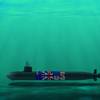Hybrid Hype
One of the greatest slices of the American workboat market can be found in the Big Apple
The Hudson and East rivers are constantly abuzz with swarms of ferry, patrol, and cargo traffic. In August, New York hosted the Transportation Research Board’s ferry committee for a midyear conference. I was fortunate to be a guest presenter at this event and speak on behalf of vessel operations on the U.S. Marine Highways. With such high use on these historic waters, it was not surprising that much of the discussion circled back to the environment and vessel impact.
When congress expanded the Marine Highways program in 2010, it was a big win for the marine industry. Funding new projects to merge people and freight off of the accident-prone and traffic-laced streets and onto unpaved highways is a philosophy we can all embrace. The marine industry has a great safety record, is not overcrowded and our country has many navigable waterways that make such a mission feasible. Those involved with shallow draft and coastal fleets truly have the most to gain. But, not so fast – there is always a catch.
Marine waterways are a natural resource that must be respected, protected and therefore regulated. At times, it seems as if regulators fail to understand that if the regulations are too restrictive and costly to implement, in the end they will utterly become futile as no one can afford a sustainable operation under such oppression. What is really needed is a compromise; a hybrid approach to being green while making it possible for operators to still add some green to the bottom line. At the center of this environmental stewardship quandary remain the very real issues of emissions, fuel and effluent.
Is Your Vessel Hybridable?
The last Tier II compliant engines are phasing out and Tier III is becoming the new but temporary standard for emissions compliance. Purchasing a tier compliant engine will satisfy the law, but a diesel and electric hybrid solution may be just the right combination to mitigate emissions and promote fuel efficiency. In New York, all eyes are on the new Hornblower Hybrid which is a testament to retrofitting a hybrid propulsion system. The latest hybrid concepts are more modular and lend themselves to greater flexibility in configuration, but designing a vessel around the hybrid system from the keel up will yield even greater efficiencies. With all the hype on hybridizing, why isn’t everyone going diesel-electric? The reality is that not every vessel is hybridable.
The market currently lacks a viable hybrid solution for some boats. In general, workboats with engines in the 800 to 3000 horsepower range and a speed requirement greater than 10 knots will presently remain coupled to conventional powertrains. Nevertheless, manufacturers like BAE Systems, Northern Lights, and ZF Marine continue to develop their hybrid offerings and it would not be surprising to see the main engine manufacturers unveil new systems in the near term. For now, technology (arguably) seems to be lagging behind demand.
The Great Fuel Debate
It remains inevitable that vessels will continue to burn fuel, but that does not translate to a dependence on diesel. The clean burning characteristics, lower cost, and prevalent domestic supply make LNG and Hydrogen likely candidates for the marine fuels of the future. That said, operators and regulatory agencies are, in many cases, not certain as to how to handle these new fuels from a safety, logistics, and technological perspective. The problems are quite simple: Where do you locate fuel cells or mount the sizable cryogenic tanks (above or below passenger decks)? How do you get the fuel to the boat (truck or bunker station)? Will engine manufacturers even make an appropriately sized engine to burn the wonder fuels?
Europe has already embraced the use of alternative marine fuels and is encouraging the U.S. to get on board. And, several U.S. projects are in development and it will take some time for the story to be told. The nation’s largest ferry system has its eyes on an LNG powered newbuild, but until more questions are answered, a hybrid retrofit may be a more likely reality for Washington State Ferries. As MarineNews went to press, Hornblower was still working with the USCG to get final approval on their proposed hydrogen fuel cell system for the New York hybrid.
License to Discharge
The EPA not only regulates what goes up, but also what goes down. Vessel effluent and discharge(s) are, therefore, clearly on the regulatory radar. By December 2013, nearly all commercial vessels will need to apply for either the Vessel General Permit (VGP) or the Small Vessel General Permit (sVGP) respective of vessel length (+/-79’). The final rule for the new permits has yet to be published but will pertain to the discharge of ship-borne pollutants and the threat of invasive species transported in ballast tanks. The permits tend to focus on operational procedures, but onboard technology can be implemented to actively clean what does end up overboard. An impressive new wastewater treatment system, Piranha, from Act2 Technologies can literally turn black water clear. The biological based treatment system uses microbes and anaerobic digestion to break down the organic material and includes complex membranes to safely remove all color, odor, and solids. The end byproduct is not simply diluted or chemically treated like other MSD effluent. The final discharge is cleaner than the sea, with over 99% of all suspended particles, bacteria, and viruses removed.
Environmental ROI
Most of the workboat market will continue down a reactionary path and will retrofit adjustments to their vessels as the new regulations are created and enforced. While showing great stewardship, modifying an existing hull is not a quick and easy process. For that matter, some boatbuilders can argue that new construction may be just as cost effective, as it will always be easier to install and more efficient to operate on a freshly laid keel. With the reward of an expanded Marine Highways Program also comes responsibility. Our industry can change, but ultimately it will take a clear demonstration of return on investment for operators to switch from compliance by law to stewardship by will.
(As published in the September 2012 edition of Marine News - www.marinelink.com)










